Product Overview
† commercial product
Metformin is an oral biguanide antidiabetic agent similar to phenformin, a drug that was withdrawn from US marketing in 1977 due to the development of lactic acidosis. The risk for this adverse reaction is considerably lower with metformin, however.[1] The actions of metformin differ from, yet complement, those of the sulfonylureas and other antidiabetic therapies. Compared to glyburide in type 2 diabetes, metformin was found to achieve similar glycemic control. although it lead to a higher incidence of digestive complaints.[2] Metformin has been found useful in the treatment of polycystic ovary syndrome (PCOS); it lowers serum androgens and restores normal menstrual cycles and ovulation, and may improve pregnancy rates.[3] Additionally, limited data indicate that it may delay puberty onset in females with precocious puberty and delay menarche onset in females with early-normal onset of puberty.[4][5] The use of metformin versus intensive lifestyle modification in patients with impaired glucose tolerance has been investigated, and while both reduce the incidence of diabetes, lifestyle intervention has the greater effect.[6] Although lifestyle intervention is highly effective, most patients fail lifestyle modifications when used alone within the first year of diagnosis. Therefore, a joint consensus algorithm for the treatment of type 2 diabetes mellitus, developed by the American Diabetes Association (ADA) and the European Association for the Study of Diabetes, suggests that the combination of metformin with lifestyle interventions should be initiated at the time of diagnosis. Metformin was chosen as the initial drug therapy based on its efficacy, safety, and cost.[7][8][9] Additionally, in a follow-up study to the UKPDS, researchers found that after 10-years of resuming typical care, patients originally randomized to metformin therapy had a 33% relative reduction (RR 0.67, 95% CI 0.51-0.89; p=0.005) in the risk of myocardial infarction and a 27% relative reduction (RR 0.73, 95% CI 0.59-0.89; p=0.002) in the risk of death from any cause as compared to patients originally randomized to conventional therapy; it should be noted that these reductions in cardiovascular risks persisted even though HbA1c concentrations were similar in the 2 groups after 1 year of follow-up.[10] Metformin was introduced in Europe in the 1950’s but was not approved by the FDA until December 1994. It is approved for type 2 diabetes either as monotherapy or in combination with sulfonylureas, alpha-glucosidase inhibitors, or insulin. The regular-release tablets were approved for use in children >= 10 years in January 2001. An oral solution (Riomet) was approved in September 2003. Three extended-release formulations have been approved, Glucophage XR in October 2000, Fortamet in April 2004, and Glumetza in June 2005, each with a unique drug delivery system (see Pharmacokinetics section). The extended-release formulations provide similar glycemic control compared to regular-release metformin, but have the advantage of once-daily administration. Another advantage is a claim of decreased adverse events, specifically gastrointestinal-related adverse events (i.e., flatulence, diarrhea); however, larger trials comparing regular-release to extended-release metformin are needed to confirm these claims as current trial results are conflicting.[11][12][13]
Metformin is an antihyperglycemic agent that improves glucose tolerance, lowering both basal and postprandial plasma glucose with mechanisms different from other classes of oral antidiabetic agents. Metformin decreases hepatic gluconeogenesis production, decreases intestinal absorption of glucose, and improves insulin sensitivity by increasing peripheral glucose uptake and utilization. With metformin therapy, insulin secretion remains unchanged while fasting insulin levels and day-long plasma insulin response may actually decrease. Metformin improve glucose utilization in skeletal muscle and adipose tissue by increasing cell membrane glucose transport. This effect may be due to improved binding of insulin to insulin receptors since metformin is not effective in diabetics without some residual functioning pancreatic islet cells.[14] Unlike the sulfonylureas, metformin rarely causes hypoglycemia since it does not significantly change insulin concentrations. An important distinction is that sulfonylureas increase insulin secretion thus making them useful in non-obese patients with type 2 diabetes while metformin improves insulin resistance, a common pathophysiologic finding in obese patients with type 2 diabetes.[14] Metformin causes a 10-20% decrease in fatty-acid oxidation and a slight increase in glucose oxidation. Unlike phenformin, metformin does not inhibit the mitochondrial oxidation of lactate unless plasma concentrations of metformin become excessive (i.e., in patients with renal failure) and/or hypoxia is present.[1]
Clinically, metformin lowers fasting and postprandial hyperglycemia. The decrease in fasting plasma glucose is approximately 25-30%. Unlike oral sulfonylureas, metformin rarely causes hypoglycemia. Thus, metformin demonstrates more of an antihyperglycemic action than a hypoglycemic action. Metformin does not cause weight gain and in fact, may cause a modest weight loss due to drug-induced anorexia. Metformin also decreases plasma VLDL triglycerides resulting in modest decreases in plasma triglycerides and total cholesterol. Patients receiving metformin show a significant improvement in hemoglobin A1c, and a tendency toward improvement in the lipid profile, especially when baseline values are abnormally elevated.
Insulin resistance is a primary cause of polycystic ovarian syndrome (PCOS). In PCOS patients, metformin reduces insulin resistance and lowers insulin levels, which lowers serum androgen concentrations, restores normal menstrual cycles and ovulation, and may help to resolve PCOS-associated infertility. Metformin, when administered to lean, overweight, and moderately obese women with PCOS, has been found to significantly reduce serum leuteinizing hormone (LH) and increase follicle stimulating hormone (FSH) and sex hormone binding globulin (SHBG). Serum testosterone concentrations were also found to decrease by approximately 50%.[3]
Your health care provider needs to know if you have any of these conditions: anemia; frequently drink alcohol-containing beverages; become easily dehydrated; heart attack; heart failure that is treated with medications; kidney disease; liver disease; polycystic ovary syndrome; serious infection or injury; vomiting; an unusual or allergic reaction to metformin, other medicines, foods, dyes, or preservatives; pregnant or trying to get pregnant; breast-feeding.
Do not use metformin in patients who have a known metformin hypersensitivity.
Metformin should not be used for Type 1 diabetes mellitus. Metformin is not an effective treatment of and use is contraindicated in diabetic ketoacidosis (DKA). DKA, with or without coma; DKA should be treated with insulin.
Metformin is contraindicated in patients with metabolic acidosis. It should not be used in patients with lactic acidosis. Lactic acidosis should be suspected in any diabetic patient withmetabolic acidosis lacking evidence of ketoacidosis (ketonuria and ketonemia). Lactic acidosis is a rare but serious complication that can occur due to metformin accumulation; when it occurs, it is fatal in approximately 50% of cases. Lactic acidosis may also occur in association with a number of pathophysiologic conditions, including diabetes mellitus, and whenever there is significant tissue hypoperfusion and hypoxemia or significant renal dysfunction. Lactic acidosis is characterized by elevated blood lactate levels, acidemia, electrolyte disturbances, an increased anion gap, and an increased lactate/pyruvate ratio. When metformin is implicated as the cause of lactic acidosis, metformin plasma levels > 5 mcg/mL are generally found. The reported incidence of lactic acidosis in patients receiving metformin is very low; in more than 20,000 patient-years exposure to metformin in clinical trials, there have been no reports of lactic acidosis and approximately 0.03 cases/1000 patient-years have been estimated with post-marketing surveillance. A nested case-control study of 50,048 patients with type 2 diabetes mellitus demonstrated that during concurrent use of oral diabetes drugs, there were 6 identified cases of lactic acidosis. The crude incidence rate was 3.3 cases per 100,000 person-years in patients treated with metformin; it should be noted that all of the subjects had relevant comorbidities known to be risk factors for lactic acidosis.[17] The onset of lactic acidosis often is subtle, and accompanied only by nonspecific symptoms such as malaise, myalgias, respiratory distress, increasing somnolence, and nonspecific abdominal distress. There may be associated hypothermia, hypotension, and resistant bradycardia with more marked acidemia. The patient and the prescriber must be aware of such symptoms and the patient should be instructed to notify the physician immediately if they occur. Metformin should be withdrawn until the situation is clarified. Serum electrolytes, ketones, blood glucose, and if indicated, blood pH, lactate levels, and even blood metformin levels may be useful.
Gastrointestinal side effects are common during metformin initiation. However, once a patient is stabilized on any dose of metformin, GI symptoms are unlikely to be drug related. Later occurrence of GI symptoms may be due to a change in clinical status and may increase the risk of lactic acidosis or other serious disease. Patients stable on metformin therapy who complain of an increase in GI symptoms should undergo laboratory investigation to determine the etiology of the GI symptoms. These include, but are not limited to, diarrhea and nausea/vomiting. Furthermore, withholding metformin therapy until the cause of the GI symptoms is known may be necessary. Finally, diarrhea and nausea/vomiting may alter gastric emptying and caloric intake, which could all affect blood glucose control, especially increasing the risk of low blood glucose. Patients should be advised to contact their prescriber if an increase in gastrointestinal symptoms occurs while taking metformin; patients should also be advised to monitor their blood glucose concentrations more frequently.
Before initiation of metformin and at least annually thereafter, renal function should be assessed. Metformin is substantially eliminated by the kidney and the risk of lactic acidosis increases with the degree of intrinsic renal disease or impairment. According to the manufacturer, metformin is contraindicated for use in patients with renal failure or renal impairment (defined as serum creatinine >= 1.4 mg/dl for females and >= 1.5 mg/dl for males by the manufacturer, although pharmacokinetic studies indicate significant metformin accumulation with CrCl < 60 ml/min) (see Pharmacokinetics). However, the American Diabetes Association and others suggest that metformin can be used in patients with lower creatinine clearances with close monitoring (see Dosage Adjustment Guidelines).[18][19] Certain medications used concomitantly with metformin may also increase the risk of lactic acidosis (see Drug Interactions). According to the manufacturer, metformin should be used with caution in patients with congestive heart failure requiring pharmacologic treatment. However, a systematic review evaluating antidiabetic agents and outcomes in patients with heart failure and diabetes concluded that metformin is not associated with any measurable harm in patients with heart failure; in this analysis, metformin was associated with reduced mortality.[20] It should be noted that in acute congestive heart failure characterized by acute hypoxia, lactic acidosis has occurred in patients taking metformin. To reduce the risk of lactic acidosis, metformin should be promptly withheld in the presence of any condition associated with hypoxemia. Acute hypoxia and acute cardiac disease (e.g., acute heart failure, cardiogenic shock, or acute myocardial infarction) and other conditions characterized by acute hypoxia have been associated with the development of lactic acidosis and may cause prerenal azotemia. If such events occur, discontinue metformin. Use metformin with caution in geriatric patients; less than 3% of patients in clinical trials were >= 75 years of age. Metformin is substantially excreted by the kidney and the risk of adverse reactions (including lactic acidosis) is greater in patients with reduced renal function. Because aging is associated with renal function decline, care should be taken with dose selection and titration. Monitor renal function regularly. Unless renal function is normal, do not use metformin in those patients >= 80 years of age. Generally, elderly or debilitated patients should not be titrated up to maximum dosages (see Dosage).
Since the liver is important for clearing accumulated lactic acid, metformin should generally be avoided in patients with hepatic disease as the risk of lactic acidosis may be increased. Hepatic disease causes altered gluconeogenesis, which may affect glycemic control. Alcohol is known to potentiate the effect of metformin on lactate metabolism and patients should be warned against ethanol intoxication (acute or chronic) while on metformin. This drug is not recommended for those with alcoholism.
Parenteral radiographic contrast administration is contraindicated in patients taking metformin; it may cause acute renal failure and has been associated with lactic acidosis. Patients undergoing studies involving iodinated radiographic contrast media should have metformin temporarily withheld just prior to and for 48 hours after the completion of the procedure. Reinstitute therapy only after normal renal function is confirmed.
To reduce the risk of lactic acidosis, metformin should be promptly withheld in the presence of any condition associated with hypoxemia, dehydration, or sepsis. Metformin therapy should be temporarily suspended for any surgery, except for minor procedures where intake of fluids and food is not restricted. Do not restart this drug until oral intake is resumed and renal function has been evaluated as normal. Temporary use of insulin in place of oral antidiabetic agents may be necessary during periods of physiologic stress (e.g., burns, systemic infection, trauma, surgery, or fever). Any change in clinical status, including diarrhea or vomiting, may also increase the risk of lactic acidosis and may require laboratory evaluation in patients on metformin and may require the drug be withheld.
Delayed stomach emptying may alter blood glucose control; monitor patients with diarrhea, gastroparesis, GI obstruction, ileus, or vomiting carefully. Conditions that predispose patients to developing hypoglycemia or hyperglycemia may alter antidiabetic agent efficacy. Conditions associated with hypoglycemia include debilitated physical condition, drug interactions, malnutrition, uncontrolled adrenal insufficiency, pituitary insufficiency or hypothyroidism. Hyperglycemia related conditions include drug interactions, female hormonal changes, high fever, severe psychological stress, and uncontrolled hypercortisolism or hyperthyroidism. More frequent blood glucose monitoring may be necessary in patients with these conditions while receiving metformin.
The safety and effectiveness of metformin have not been established in neonates, infants and children < 10 years; in general, there are limited experiences with metformin use in pediatric patients with Type 2 diabetes mellitus. The oral solution and regular-release tablet formulations of metformin have been approved for use in children >= 10 years and experience with children 10-16 years of age has demonstrated similar glycemic control to adults. However, the safety and efficacy of the extended-release tablet formulations have not been established in children under the age of 18 years.
Metformin may result in suboptimal vitamin B12 absorption, possibly due to interference with the B12-intrinsic factor complex. The interaction very rarely results in a pernicious anemia that appears reversible with discontinuation of metformin or with cyanocobalamin supplementation. Certain individuals may be predisposed to this type of anemia; a nested case-control study of 465 patients taking metformin (155 with vitamin B12 deficiency and 310 without) demonstrated that dose and duration of metformin use may be associated with an increased odds of vitamin B12 deficiency. Each 1 gram/day increment in dose significantly increased the odds of vitamin B12 deficiency (OR 2.88, 95% CI 2.15-3.87) as did taking metformin for >= 3 years (OR 2.39, 95% CI 1.46-3.91).[21] Regular measurement of hematologic parameters is recommended in all patients on chronic metformin treatment.
Premenopausal anovulatory females with insulin resistance (i.e., those with polycystic ovary syndrome (PCOS)) may resume ovulation as a result of metformin therapy; patients may be at risk of conception if adequate contraception is not used in those not desiring to become pregnant. In some cases, metformin is used as an adjunct in PCOS patients to regulate menstrual cycles or to enhance fertility. Metformin is classified in FDA pregnancy risk category B; however, metformin is not recommended for routine use during pregnancy.[15] Based on the results of a small study, it appears that metformin does pass through the placenta and the fetus is exposed to therapeutic concentrations of metformin. In 13 patients taking metformin throughout pregnancy, metformin concentrations were higher in the infant umbilical vein and umbilical artery than the maternal blood sample; the authors postulated that metformin is excreted into the amniotic fluid by the fetus and then swallowed allowing for reabsorption. Adverse effects on the pH of umbilical artery blood were not found.[22] A study of 109 women with PCOS who were treated with metformin 1.5-2.55 g/day at the time of conception and continued treatment throughout pregnancy found no difference in the development of preeclampsia and a lower rate of gestational diabetes when compared to a control group of pregnant women without PCOS. Among the 126 infants born to the women with PCOS, two birth defects occurred: one sacrococcygeal teratoma and one tethered spinal cord. Follow up to 18 months of age found no differences in height or weight in infants exposed to metformin compared to controls and no abnormalities in motor or social development.[23] Other epidemiologic data suggest no increase in the rates of expected birth defects in women taking metformin who become pregnant. Metformin has been studied during the second and third trimesters of pregnancy. The neonatal mortality rate appeared lower in patients receiving metformin than in mildly diabetic controls, but slightly higher incidences of polycythemia and necrotizing enterocolitis were noted in the metformin group. The most frequently encountered infant problems were jaundice, polycythemia, and hypoglycemia.[24] The American College of Obstetrician and Gynecologists recommends insulin as the therapy of choice to maintain blood glucose as close to normal as possible during pregnancy in patients with type I or II diabetes mellitus, and, if diet therapy alone is not successful, for those patients with gestational diabetes.[25][26] More recent studies comparing metformin to insulin in the treatment of gestational diabetes found no significant differences in glycemic control or pregnancy outcomes.[27] One study comparing metformin (n = 100) to insulin (n = 100) for the treatment of gestational diabetes found significantly lower weight gain during pregnancy and improved neonatal morbidity with respect to prematurity, neonatal jaundice, and admission to the neonatal unit in the metformin group.[28]
Animal data show that metformin is excreted into breast milk and reaches levels similar to those in plasma. Small studies indicate that metformin is excreted in human breast milk. Infant hypoglycemia or other side effects are a possibility; however, adverse effects on infant plasma glucose have not been reported in human studies.[29][30][31] Furthermore, the use of metformin 2550 mg/day by mothers breast-feeding their infants for 6 months does not affect growth, motor, or social development; the effects beyond 6 months are not known.[32] In all of these studies, the estimated weight-adjusted infant exposure to metformin ranged from 0.11-1.08% of the mother’s dose. While the manufacturers of metformin recommend that a decision should be made to discontinue breast-feeding or discontinue the drug, the results of these studies indicate that maternal ingestion of metformin during breast-feeding is probably safe to the infant. However, a risk and benefit analysis should be made for each mother and her infant; if patients elect to continue metformin while breast-feeding, the mother should be aware of the potential risks to the infant. If metformin is discontinued and blood glucose is not controlled on diet and exercise alone, insulin therapy should be considered. Because acarbose has limited systemic absorption, which results in minimal maternal plasma concentrations, clinically significant exposure via breastmilk is not expecte; therefore, this agent may represent a reasonable alternative for some patients.[33] In addition, the American Academy of Pediatrics (AAP) regards tolbutamide as usually compatible with breast-feeding; other sulfonylureas have not been evaluated by the AAP.[34] If any oral hypoglycemics are used during breast feeding, the nursing infant should be monitored for signs of hypoglycemia, such as increased fussiness or somnolence.[35]
This list may not include all possible contraindications.
Possible interactions include: digoxin; diuretics; female hormones, like estrogens or progestins and birth control pills; isoniazid; medicines for blood pressure, heart disease, irregular heart beat; morphine; nicotinic acid; phenothiazines like chlorpromazine, mesoridazine, prochlorperazine, thioridazine; phenytoin; procainamide; quinidine; quinine; ranitidine; steroid medicines like prednisone or cortisone; stimulant medicines for attention disorders, weight loss, or to stay awake; thyroid medicines; trimethoprim; vancomycin.
Furosemide increased the metformin plasma and blood maximum concentrations by 22% and blood AUC by 15%, without any significant change in metformin renal clearance.[37] On the other hand, metformin decreased furosemide plasma and blood maximum concentrations by 31% and 12%, respectively, than when administered alone. Furosemide’s terminal half-life was also decreased by 32% without any significant change in furosemide renal clearance. In addition, furosemide may cause hyperglycemia and glycosuria in patients with diabetes mellitus, likely due to diuretic-induced hypokalemia.[38] Blood glucose concentrations should be monitored in patients taking furosemide with metformin.
Torsemide or bumetanide may cause hyperglycemia and glycosuria in patients with diabetes mellitus, likely due to diuretic-induced hypokalemia.[39][40] Blood glucose concentrations should be monitored in patients taking either with metformin.
Endogenous counter-regulatory hormones such as glucocorticoids, growth hormone, or glucagon, are released in response to hypoglycemia. When released, blood glucose concentrations rise.[41] When these agents are administered exogenously, increases in blood glucose concentrations would be expected thereby decreasing the hypoglycemic effect of antidiabetic agents.[42][43][44] In addition, blood lactate concentrations and the lactate to pyruvate ratio increase when metformin is coadministered with corticosteroids (e.g., hydrocortisone). Elevated lactic acid concentrations are associated with increased morbidity rates.[45] Patients receiving antidiabetic agents should be closely monitored for signs indicating loss of diabetic control when corticosteroids are instituted. Patients receiving antidiabetic agents should be closely monitored for signs indicating loss of diabetic control when growth hormone is instituted.
Triamterene can decrease the hypoglycemic effects of antidiabetic agents by producing an increase in blood glucose concentrations.[46] In addition, certain medications used concomitantly with metformin may increase the risk of lactic acidosis; cationic drugs that are eliminated by renal tubular secretion such as triamterene may decrease metformin elimination by competing for common renal tubular transport systems. Monitor patients receiving both metformin and triamterene for changes in blood glucose control. Dosage adjustments may be necessary.
Thiazide diuretics can decrease the hypoglycemic effects of antidiabetic agents by producing an increase in blood glucose levels. It appears that the effects of thiazide diuretics on glycemic control are dose-related and low doses can be instituted without deleterious effects on glycemic control.[45] In addition, thiazide diuretics reduce the risk of stroke and cardiovascular disease in patients with diabetes.[47] Patients receiving metformin should be monitored for changes in blood glucose control if any of these diuretics are added or deleted. Dosage adjustments may be necessary.
Sulfonamides may induce hypoglycemia in some patients by increasing the secretion of insulin from the pancreas. Patients at risk include those with compromised renal function, those fasting for prolonged periods, those that are malnourished, and those receiving high or excessive doses of sulfonamides.[48] Patients should be closely monitored while receiving any of these drugs in combination with antidiabetic agents.
Fibric acid derivatives may enhance the hypoglycemic effects antidiabetic agents through increased insulin sensitivity and decreased glucagon secretion.[42][49] Patients receiving these drugs concomitantly with antidiabetic agents should be monitored for changes in glycemic control. In addition, clofibrate and fenofibrate may displace glyburide from protein binding sites which may lead to enhanced hypoglycemic action.[50]
Certain medications used concomitantly with metformin may increase the risk of lactic acidosis. Cationic drugs that are eliminated by renal tubular secretion (e.g., adefovir, amiloride, cimetidine, ranitidine, entecavir, lamivudine, 3TC, memantine, midodrine, morphine, procainamide, quinidine, quinine, trospium, vancomycin, etc.) may decrease metformin elimination by competing for common renal tubular transport systems.[37][51][52][53][54][55][56][57][58][59][60][61] Although such interactions remain theoretical, careful patient monitoring and dose adjustment of metformin and/or the interfering cationic drug are recommended. The interaction between metformin and cimetidine has been observed, with a 60% increase in metformin Cmax and a 40% increase in metformin AUC.[62]
Increased serum digoxin concentrations have been reported in patients who received digoxin and metformin. Both drugs are actively secreted via cationic secretion and could compete for common renal tubular transport systems.[15][63] This results in a possible increase in plasma concentrations of either drug. Reduced clearance of metformin may increase the risk for lactic acidosis; increased concentrations of digoxin may increase the risk of digoxin toxicity.Measure serum digoxin concentrations before initiating metformin. Monitor patients who take both metformin and digoxin for possible digoxin toxicity and lactic acidosis; reduce the dose of digoxin and metformin as necessary.[15][63]
Dofetilide should be co-administered with metformin with caution since both drugs are actively secreted via cationic secretion and could compete for common renal tubular transport systems.[15][64] This results in a possible increase in plasma concentrations of either drug. Reduced clearance of metformin may increase the risk for lactic acidosis; increased concentrations of dofetilide may increase the risk for side effects including proarrhythmia. Careful patient monitoring and dose adjustment of metformin and dofetilide is recommended.[15]
Both cyclosporine and tacrolimus have been reported to cause hyperglycemia. Furthermore, tacrolimus has been implicated in causing insulin-dependent diabetes mellitus in patients after renal transplantation. Both of these drugs may have direct beta-cell toxicity; the effects from cyclosporine may be dose-related.[49][65] Patients should be monitored for worsening of glycemic control if therapy with either of these immunosuppressant drugs is initiated in patients receiving antidiabetic agents.
Alcohol (ethanol) may cause variable effects on glycemic control when used in patients receiving antidiabetic therapy.[42][45] Alcohol ingestion can decrease endogenous glucose production potentiating the risk of hypoglycemia.[66] Alternatively, alcohol can worsen glycemic control as it provides a source of additional calories. In addition, blood lactate concentrations and the lactate to pyruvate ratio increase when metformin is coadministered with ethanol. Elevated lactic acid concentrations are associated with increased morbidity rates. Ethanol should be avoided, if possible, in patients taking metformin. Many non-prescription drug products may be formulated with ethanol; have patients scrutinize product labels prior to consumption.
Metformin may result in suboptimal oral vitamin B12 absorption by competitively blocking the calcium-dependent binding of the intrinsic factor-vitamin B12 complex to its receptor.[37] The interaction very rarely results in a pernicious anemia that appears reversible with discontinuation of metformin or with cyanocobalamin, vitamin B12 supplementation. Certain individuals may be predisposed to this interaction. Regular measurement of hematologic parameters is recommended in all patients on chronic metformin treatment; abnormalities should be investigated.
A single-dose, metformin-nifedipine drug interaction study in normal healthy volunteers demonstrated that coadministration of nifedipine increased plasma metformin Cmax and AUC by 20% and 9%, respectively, and increased the amount of metformin excreted in the urine.[37] Metformin half-life was unaffected. Nifedipine appears to enhance the absorption of metformin.
ACE inhibitors may enhance the hypoglycemic effects of antidiabetic agents by improving insulin sensitivity.[42][45][49] In addition, ACE inhibitors have been associated with a reduced incidence in the development of new-onset diabetes in patients with hypertension or other cardiac disease.[67] Patients receiving these drugs concomitantly with metformin should be monitored for changes in glycemic control.
Angiotensin II receptor antagonists may enhance the hypoglycemic effects of antidiabetic agents by improving insulin sensitivity.[68] In addition, angiotensin II receptor antagonists have been associated with a reduced incidence in the development of new-onset diabetes in patients with hypertension or other cardiac disease.[67] Patients receiving these drugs concomitantly with metformin should be monitored for changes in glycemic control.
Large doses of salicylates may enhance hypoglycemia in diabetic patients via inhibition of prostaglandin synthesis.[45] If these agents are administered or discontinued in patients receiving oral antidiabetic agents, patients should be monitored for hypoglycemia or loss of blood glucose control.
Beta-blockers exert complex actions on the body’s ability to regulate blood glucose. Because of this, beta-blockers may cause a pharmacodynamic interaction with antidiabetic agents. Beta-blockers can prolong hypoglycemia by interfering with glycogenolysis (secondary to blocking the compensatory actions of epinephrine) or can promote hyperglycemia (by inhibiting insulin secretion and decreasing tissue sensitivity to insulin). Furthermore, a prospective trial in non-diabetic patients with hypertension indicated that treatment with beta-blockers increased the risk of the development of diabetes by 28% at six years.[69] In addition, beta-blockers may mask the signs and symptoms of hypoglycemia, specifically the tachycardic response, and exaggerate the hypertensive response to hypoglycemia. Although no significant pharmacokinetic interactions between beta-blockers and antidiabetic agents have been observed, patients receiving beta-blockers and antidiabetic agents concomitantly should be closely monitored for an inappropriate response. Selective beta-blockers, such as acebutolol, atenolol, or metoprolol, can cause fewer problems with blood glucose regulation, although these agents can still mask the symptoms of hypoglycemia.[45] While beta-blockers may have negative effects on glycemic control, they reduce the risk of cardiovascular disease and stroke in patients with diabetes.[47] Furthermore, their use should not be avoided in patients with compelling indications for beta-blocker therapy (i.e., post-MI, heart failure, etc.) when no other contraindications are present. Decreased mortality has been shown in the post-MI and heart failure populations when beta-blockers are used, especially in patients with coexisting diabetes mellitus.[45]
Disturbances of blood glucose, including hyperglycemia and hypoglycemia, have been reported in patients treated concomitantly with quinolones and an antidiabetic agent. Therefore, careful monitoring of blood glucose is recommended when quinolones and antidiabetic agents, including metformin, are coadministered.[70][71] Gatifloxacin is contraindicated for use in patients with diabetes mellitus as serious alterations in blood glucose have been reported with its use; therefore, gatifloxacin should not be used in combination with antidiabetic agents.[72]
Drugs that may cause hyperglycemia may cause temporary loss of glycemic control in patients receiving antidiabetic agents. These drugs include phenytoin and fosphenytoin and possibly ethotoin.[15][73] Close observation and monitoring of blood glucose is necessary to maintain adequate glycemic control.
Because cisapride can enhance gastric emptying in diabetic patients, blood glucose can be affected, which, in turn, may affect the clinical response to antidiabetic agents.[74] The dosing of metformin may require adjustment in patients who receive GI prokinetic agents concomitantly.
Because metoclopramide can enhance gastric emptying in diabetic patients, blood glucose can be affected, which, in turn, may affect the clinical response to antidiabetic agents.[75] The dosing of metformin may require adjustment in patients who receive GI prokinetic agents concomitantly.
Because tegaserod can enhance gastric emptying in diabetic patients, blood glucose can be affected, which, in turn, may affect the clinical response to antidiabetic agents.[76] The dosing of metformin may require adjustment in patients who receive GI prokinetic agents concomitantly.
Serum glucose should be monitored closely when MAOIs are added to any regimen containing antidiabetic agents. Animal data indicate that MAOIs may stimulate insulin secretion. Inhibitors of MAO type A have been shown to prolong the hypoglycemic response to insulin and oral sulfonylureas.[45]
The phenothiazines, especially chlorpromazine, may increase blood sugar.[77] Patients should be closely monitored for worsening glycemic control when phenothiazines are instituted.
The atypical antipsychotics (aripiprazole, clozapine, olanzapine, quetiapine, risperidone, and ziprasidone) have been associated with causing hyperglycemia, even diabetic ketoacidosis, hyperosmolar, hyperglycemic states, and diabetic coma. Possible mechanisms include atypical antipsychotic-induced insulin resistance or direct beta-cell inhibition.[69] While a causal relationship has not been established, temporal associations of atypical antipsychotic therapy with the aggravation of diabetes mellitus have been reported.[78] Patients should be closely monitored for worsening glycemic control when any of these antipsychotics is instituted.
Lithium may cause variable effects on glycemic control when used in patients receiving antidiabetic therapy.[42][45] Blood glucose concentrations should be closely monitored if lithium is taken by the patient. Dosage adjustments of antidiabetic therapy may be necessary.
Thyroid hormones are important in the regulation of carbohydrate metabolism, gluconeogenesis, the mobilization of glycogen stores, and protein synthesis. Close monitoring of blood glucose is necessary for individuals who use insulin or oral hypoglycemics whenever there is a change in thyroid treatment. It may be necessary to adjust the dose of antidiabetic agents if thyroid hormones are added or discontinued.[37]
Isoniazid, INH may increase blood sugar. Patients receiving antidiabetic agents should be closely monitored for loss of diabetic control when this drug is initiated.[37]
Because diazoxide inhibits the release of insulin from pancreatic islet cells and thus increases blood glucose, a pharmacodynamic interaction exists between this drug and all other antidiabetic agents.[79]
Oral contraceptives (estrogens and progestins) can decrease the hypoglycemic effects of antidiabetic agents by impairing glucose tolerance.[37] Changes in glucose tolerance occur more commonly in patients receiving > 50 mcg of ethinyl estradiol per day. The presence or absence of a concomitant progestin may influence the significance of this effect. Patients receiving antidiabetic agents should be closely monitored for changes in diabetic control when hormone therapy is instituted or discontinued.
Exogenously administered androgens (testosterone derivatives or anabolic steroids) have variable effects on blood glucose control in patients with diabetes mellitus. In general, low testosterone concentrations are associated with insulin resistance. Further, when hypogonadal men (with or without diabetes) are administered exogenous androgens, glycemic control typically improves as indicated by significant reductions in fasting plasma glucose concentrations and HbA1c. In one study in men with diabetes , testosterone undecenoate 120 mg PO/day for 3 months decreased HbA1c concentrations from a baseline of 10.4% to 8.6% (P<0.05); fasting plasma glucose concentrations decreased from 8 mmol/l at baseline to 6 mmol/l (P<0.05). Significant reductions in HbA1c and fasting plasma glucose concentrations did not occur in patients taking placebo.[80] Similar results have been demonstrated with intramuscular testosterone 200 mg administered every 2 weeks for 3 months in hypogonadal men with diabetes.[81] In healthy men, testosterone enanthate 300 mg IM/week for 6 weeks or nandrolone 300 mg/week IM for 6 weeks did not adversely affect glycemic control; however, nandrolone improved non-insulin mediated glucose disposal.[82] It should be noted that some studies have shown that testosterone supplementation in hypogonadal men has no effect on glycemic control.[83][84] Conversely, the administration of large doses of anabolic steroids in power lifters decreased glucose tolerance, possibly through inducing insulin resistance.[85] While data are conflicting, it would be prudent to monitor all patients with type 2 diabetes on antidiabetic agents receiving androgens for changes in glycemic control, regardless of endogenous testosterone concentrations. Hypoglycemia or hyperglycemia can occur; dosage adjustments of the antidiabetic agent may be necessary.
Endogenous epinephrine is released in response to hypoglycemia; epinephrine, through stimulation of alpha- and beta- receptors, increases hepatic glucose production and glycogenolysis and inhibits insulin secretion in order to increase serum glucose concentrations.[41] A pharmacodynamic interaction may occur when pseudoephedrine and other sympathomimetics are administered to patients as these agents may increase blood glucose concentrations by a similar mechanism.[86] Patients receiving metformin should be closely monitored for loss of diabetic control when therapy with sympathomimetic agents is instituted.
Fenfluramine and dexfenfluramine may potentiate the actions of some antidiabetic agents via increasing glucose uptake by muscle cells.[87][88] Monitor patients taking either of these drugs in combination with metformin for hypoglycemia.
Limited animal data suggest that selected constituents in Garlic, Allium sativum might have some antidiabetic activity, resulting in increased serum insulin concentrations and increased glycogen storage in the liver.[89] Patients with diabetes frequently purchase alternative remedies that have been purported to improve glycemic control, but there is no scientific or controlled evidence in humans of this action.[90] Limited clinical evidence suggests that garlic does not affect blood glucose in those without diabetes.[91] Until more data are available, individuals receiving antidiabetic agents should use caution in consuming dietary supplements containing garlic, and follow their normally recommended strategies for blood glucose monitoring.
Niacin, Niacinamide interferes with glucose metabolism and can result in hyperglycemia.[92] When used at daily doses of 750-2000 mg, niacin significantly lowers LDL cholesterol and triglycerides while increasing HDL cholesterol. Changes in glycemic control can usually be corrected through modification of hypoglycemic therapy.[93] Monitor patients on antidiabetic therapy for blood glucose control if niacin (nicotinic acid) is added or deleted to the medication regimen. Dosage adjustments may be necessary.
Dextrothyroxine (based on the actions of thyroxine) can decrease the hypoglycemic effects of antidiabetic agents by producing an increase in blood glucose levels.[94] Monitor patients on antidiabetic agents for blood glucose control if dextrothyroxine is added or deleted.
Disopyramide may enhance the hypoglycemic effects of antidiabetic agents by lowering blood glucose concentrations.[95] Patients receiving disopyramide concomitantly with antidiabetic agents should be monitored for changes in glycemic control.
Guanethidine may enhance the hypoglycemic effects of antidiabetic agents; furthermore, because of its sympatholytic activity, guanethidine may mask the signs and symptoms of hypoglycemia.[42][96] Patients receiving guanethidine concomitantly with antidiabetic agents should be monitored for changes in glycemic control.
Clonidine may potentiate or weaken the hypoglycemic effects of antidiabetic agents, and may also mask the signs and symptoms of hypoglycemia.[42] Patients receiving clonidine concomitantly with antidiabetic agents should be monitored for changes in glycemic control.
Reserpine may mask the signs and symptoms of hypoglycemia.[42] Patients receiving reserpine concomitantly with antidiabetic agents should be monitored for changes in glycemic control.
Patients who have both acromegaly and diabetes mellitus and are being treated with antidiabetic agents may require dose reductions of these medications after the initiation of pegvisomant. Growth hormone decreases insulin sensitivity by opposing the effects of insulin on carbohydrate metabolism; therefore, pegvisomant, which antagonizes growth hormone, is expected to have the opposite effect. Although none of the acromegalic patients with diabetes mellitus who were treated with pegvisomant during the clinical studies developed clinically relevant hypoglycemia, such patients should monitor their blood glucose regularly, with doses of anti-diabetic medications reduced as necessary.[97]
Carbonic anhydrase inhibitors can cause glycosuria and hyperglycemia in diabetic patients, thereby decreasing the effects of antidiabetic therapy. Carbonic anhydrase inhibitors may also cause hypoglycemia. In addition, carbonic anhydrase inhibitors frequently decrease serum bicarbonate and induce non-anion gap, hyperchloremic metabolic acidosis. Use these drugs with caution in patients treated with metformin, as the risk of lactic acidosis may increase.[98] Patients should be closely monitored for changes in glycemic control when using carbonic anhydrase inhibitors in combination with antidiabetic therapy.[99] Dosage adjustments may be required.
Zonisamide frequently decreases serum bicarbonate and induces non-anion gap, hyperchloremic metabolic acidosis. Use zonisamide with caution in patients treated with metformin, as the risk of lactic acidosis may increase. Careful patient monitoring during use of metformin is recommended.[98]
Fluoxetine may enhance the hypoglycemic effects of antidiabetic agents.[42][49] Monitor serum glucose concentrations.
New onset diabetes mellitus, exacerbation of diabetes mellitus, and hyperglycemia due to insulin resistance have been reported with use of anti-retroviral protease inhibitors. Another possible mechanism is impairment of beta-cell function.[69] Onset averaged approximately 63 days after initiating protease inhibitor therapy, but has occurred as early as 4 days after beginning therapy. Diabetic ketoacidosis has occurred in some patients including patients who were not diabetic prior to protease inhibitor treatment. Patients taking antidiabetic therapy should be closely monitored for changes in glycemic control, specifically hyperglycemia, if protease inhibitor therapy is initiated.[78]
Chromium, as part of the glucose tolerance factor (GTF) molecule, appears to facilitate the binding of insulin to insulin receptors in tissues and to aide in glucose metabolism. Because blood glucose may be lowered by the use of chromium, patients who are on antidiabetic agents (e.g., insulin, metformin. sulfonylureas, thiazolidinediones, etc.) may need dose adjustments. Close monitoring of blood glucose is recommended.[100][101]
Because baclofen can increase blood glucose, doses of antidiabetic agents may need adjustment in patients receiving these drugs concomitantly.[102]
Pentamidine can be harmful to pancreatic cells. This effect may lead to hypoglycemia acutely, followed hyperglycemia with prolonged pentamidine therapy. Patients on antidiabetic agents should be monitored for the need for dosage adjustments during the use of pentamidine.[103]
Administration of octreotide to patients receiving oral antidiabetic agents or insulin can produce hypoglycemia due to slowing of gut motility which leads to decreased postprandial glucose concentrations. Patients should be monitored closely and doses of these medications adjusted accordingly if octreotide is added.[104]
Changes in dietary intake and weight loss induced by orlistat may improve metabolic control in obese diabetic patients, which may be additive to the effects of antidiabetic agents.[105] Lower blood glucose as a result of orlistat-induced changes in body composition may necessitate a dosage reduction of antidiabetic agents with time.
Propantheline slows GI motility, which may increase the absorption of metformin from the small intestine.[106] A 19% increase in metformin AUC has been reported in studies of this interaction in healthy volunteers. However, no serious side effects resulted.
During clinical trials of bortezomib, hypoglycemia and hyperglycemia were reported in diabetic patients receiving antidiabetic agents. Patients on oral antidiabetic agents receiving bortezomib treatment may require close monitoring of their blood glucose levels and dosage adjustment of their medication.[107]
Per the manufacturer, metformin and combination products containing metformin (e.g., metformin; rosiglitazone combinations, glyburide; metformin combinations or glipizide; metformin combinations) should be temporarily discontinued prior to the administration of iodinated radiopaque contrast agents. Metformin should be held for at least 48 hours after contrast administration and not restarted until renal function returns to normal post-procedure. Lactic acidosis has been reported in patients taking metformin that experience nephrotoxicity after iodinated contrast media.[37]
Drug interactions with Horse chestnut, Aesculus hippocastanum are not well documented. Based on animal studies of oral glucose tolerance tests in rats, selected escins in Horse chestnut may exhibit glucose-lowering activity.[108] Thus, Horses chestnut might interact with antidiabetic agents by enhancing hypoglycemic activity. The mechanism of the effect is not certain; clinical documentation of the interaction in humans is lacking at this time.
In healthy subjects given single 500 mg doses of cephalexin and metformin, plasma metformin Cmax and AUC increased by an average of 34% and 24%, respectively; metformin renal clearance decreased by an average of 14%. No information is available about the interaction of cephalexin and metformin following multiple dose administration.[109][110]
Green tea catechins have been shown to decrease serum glucose concentrations in vitro.[111][112] Patients with diabetes mellitus taking antidiabetic agents should be monitored closely for hypoglycemia if consuming green tea products.
Nicotine activates neuroendocrine pathways (e.g., increases in circulating cortisol and catecholamine levels) and may increase plasma glucose; tobacco smoking is known to aggravate insulin resistance. The cessation of nicotine therapy or tobacco smoking may result in a decrease in blood glucose.[113] Blood glucose concentrations should be monitored more closely whenever a change in either nicotine intake or smoking status occurs; dosage adjustments in antidiabetic agents may be needed.
Use caution in combining mecasermin, recombinant, rh-IGF-1 and mecasermin rinfabate (rh-IGF-1/rh-IGFBP-3) with antidiabetic agents. The hypoglycemic effect induced by IGF-1 activity may be exacerbated. Although the rh-IGF-1/rh-IGFBP-3 complex has less propensity to rapidly lower blood glucose compared to unbound mecasermin, hypoglycemia is possible with either agent.[114] The amino acid sequence of mecasermin (rh-IGF-1) is approximately 50 percent homologous to insulin and cross binding with either receptor is possible.[115] Treatment with mecasermin (rh-IGF-1) has been shown to improve insulin sensitivity and to improve glycemic control in patients with either Type 1 or Type 2 diabetes mellitus when used alone or in conjunction with insulins.[116] Patients should be advised to eat within 20 minutes of mecasermin administration. Glucose monitoring is important when initializing or adjusting mecasermin therapies, when adjusting concomitant antidiabetic therapy, and in the event of hypoglycemic symptoms.
Levomefolate and metformin should be used together cautiously. Plasma concentrations of levomefolate may be reduced during treatment of type 2 diabetes with metformin.[117] Monitor patients for decreased efficacy of levomefolate if these agents are used together.
Concurrent use of topiramate and metformin is contraindicated in patients with metabolic acidosis. Topiramate frequently causes metabolic acidosis, a condition for which the use of metformin is contraindicated.[118] During a drug interaction study evaluating concurrent use of topiramate and metformin in healthy volunteers, the following changes in metformin pharmacokinetics were observed: the mean Cmax was increased by 17%, the mean AUC was increased by 25%, and the oral plasma clearance was decreased by 20%.[119] The oral plasma clearance of topiramate was reduced, but the extent of the change is unknown.
Limit the dose of metformin to 1700 mg/day if coadministered with ranolazine 1000 mg twice daily. Coadministration of metformin and ranolazine 1000 mg twice daily results in increased plasma concentrations of metformin. Monitor blood glucose concentrations and risks associated with high metformin concentrations. Doses of metformin do not require reduction if coadministered with ranolazine 500 mg twice daily, as metformin exposure was not significantly increased when coadministered with ranolazine 500 mg twiice daily.[120]
This list may not include all possible drug interactions. Give your health care provider a list of all the medicines, herbs, non-prescription drugs, or dietary supplements you use. Also tell them if you smoke, drink alcohol, or use illegal drugs. Some items may interact with your medicine.
Possible side effects include: Diarrhea; headache; heartburn; metallic taste in mouth; nausea; stomach gas, upset. This list may not describe all possible side effects. Call your doctor for medical advice about side effects.
Gastrointestinal adverse effects are the most common experienced by patients taking metformin.[15] In clinical trials, diarrhea was experienced by 53.2% of patients receiving immediate-release metformin monotherapy, and was a reason for drug discontinuation in 6%. Extended-release formulations cause diarrhea in roughly 9.6% of patients. Nausea and vomiting are reported in 6.5-25.5% of all patients taking metformin; with the lower incidences seen in patients receiving extended-release products. Other common GI effects include flatulence (1-12.1%), indigestion or dyspepsia (1-7.1%), and abdominal pain or discomfort (1-6.4%). GI effects occurring in 1-5% of patients include include anorexia, dysgeusia (metallic taste or other taste disturbance), and a change in stool appearance. Frequent side effects tend to decline with continued use and can be minimized by initiating therapy with low doses of metformin. In pediatric patients with diabetes mellitus type 2 treated with metformin, the adverse event profiles and incidences are similar to those seen in adults.
The risk of hypoglycemia is much less common with metformin than with the sulfonylureas, however, it has been reported with metformin monotherapy in clinical trials at an incidence of 1-5%.[14][15] Other studies have reported varying incidences of hypoglycemia. In one nested case-control analysis of over 50,000 subjects with type 2 diabetes mellitus, the rate of hypoglycemia due to metformin monotherapy yielded a crude incidence rate of 3.3 cases among 100,000 person-years compared with 4.8 cases among sulfonylurea users per 100,000 person years; the incidence of hypoglycemia was significantly higher in sulfonylurea-treated patients.[17] In a separate systematic review, the rates for hypoglycemia with metformin monotherapy varied in the studies reviewed between 0-21%, with the risk of major hypoglycemic episodes reported to be rare.[121] Hypoglycemia is more common when metformin is coadministered with other oral hypoglycemic agents (especially sulfonylureas), when ethanol has been ingested, or when there is deficient caloric intake or strenuous exercise not compensated by caloric supplementation.[15][121] Since metformin reverses insulin resistance, and subsequently causes a decrease in insulin concentrations, metformin-induced hypoglycemia is usually mild and does not necessitate the discontinuation of therapy. In overdose, hypoglycemia is noted in roughly 10% of patients, but causal association with metformin is not established.[15]
Asymptomatic vitamin B12 deficiency was reported with metformin monotherapy in 7% of patients during clinical trials.[15] Serum folic acid concentrations did not decrease significantly. Such decrease, possibly due to interference with B12 absorption from the B12-intrinsic factor complex, is, however, very rarely associated with anemia and appears to be rapidly reversible with discontinuation of metformin treatment or vitamin B12 supplementation. Measurement of hematologic parameters on an annual basis is advised. Certain individuals (those with inadequate vitamin B12 or calcium intake or absorption) appear to be predisposed to developing subnormal vitamin B12 levels. In these patients, routine serum vitamin B12 measurements at 2- to 3-year intervals may be useful. Rare cases of megaloblastic anemia have been reported with metformin (none in the US); incidence rates are expected to be < 1% for symptomatic deficiency.[15] Mild weight loss may occur during therapy with metformin, perhaps as a result of its ability to cause anorexia. Such weight loss can be expected in almost any patient with type 2 diabetes receiving metformin monotherapy; however, weight loss may attenuate when metformin is combined with other treatments. A mean weight loss of 1-8.4 lbs was reported in clinical trials of adults receiving monotherapy with metformin immediate release products; a mean weight loss of 2-3 lbs was reported in pediatric studies.[15] When extended-release tablets were used, the weight loss was not clinically significant in adults and mean reductions ranged from 0.7-2.2 lbs.[15] Lactic acidosis is a rare, but serious, form of metabolic acidosis that can occur if metformin accumulates during treatment; when it occurs, it is fatal in approximately 50% of cases. The onset of lactic acidosis often is subtle, and accompanied only by early nonspecific symptoms such as malaise and myalgia (1-5% of patients), and quickly followed by respiratory distress (dyspnea 1-5%), increasing somnolence, and nonspecific abdominal distress. Lactic acidosis is a medical emergency that must be treated in a hospital setting; metformin should be discontinued immediately and general supportive measures promptly instituted. Prompt hemodialysis is recommended to correct the acidosis and remove the accumulated metformin. Such management often results in prompt reversal of symptoms and recovery.[15] Lactic acidosis is characterized by elevated blood lactate levels (>5 mmol/L), decreased blood pH, electrolyte disturbances with an increased anion gap, and an increased lactate/pyruvate ratio. When metformin is implicated as the cause of lactic acidosis, metformin plasma levels > 5 mcg/mL are generally found. There may be associated hypothermia, hypotension, and resistant bradyarrhythmias with more marked metabolic acidosis. The reported incidence of lactic acidosis in patients receiving metformin hydrochloride is very low (approximately 0.03 cases/1000 patient-years); of nearly 20,000 patients in clinical trials, there were no reports of lactic acidosis.[15] A nested case-control study of 50,048 patients with type 2 diabetes mellitus demonstrated that during concurrent use of oral diabetes drugs, there were 6 identified cases of lactic acidosis; all of the subjects had relevant co-morbidities known to be risk factors for lactic acidosis.[17] The incidence of lactic acidosis appears to be no more common in metformin recipients without comorbid conditions than in recipients of other antidiabetic agents.[121] Risk factors include significant renal insufficiency, the presence of multiple concomitant medical/surgical problems (e.g., liver disease, alcoholism, cardiorespiratory insufficiency or other conditions associated with tissue hypoperfusion or hypoxemia), and exposure to multiple concomitant medications known to increase risks. The risk of lactic acidosis increases with the degree of renal impairment and the patient’s age. Lactic acidosis is less likely to occur with metformin than with other biguanide agents (e.g., phenformin), because metformin is not metabolized, does not bind to liver or plasma proteins, and is excreted by active tubular processes. Regular monitoring of renal function and by use of the minimum effective dose of metformin may reduce the risk of this adverse reaction. Patients should be informed to discontinue metformin should symptoms suggestive of lactic acidosis appear and promptly report the symptoms to their physician.
The following miscellaneous adverse reactions were reported in 1-5% of patients treated with metformin and occurred more commonly than in patients treated with placebo: lightheaded (dizziness), nail disorder, rash (unspecified), hyperhidrosis (sweating increased), chest pain (unspecified) or chest discomfort, chills, flu syndrome or upper respiratory infection, flushing, and palpitations.[15]
This list may not include all possible adverse reactions or side effects. Call your health care provider immediately if you are experiencing any signs of an allergic reaction: skin rash, itching or hives, swelling of the face, lips, or tongue, blue tint to skin, chest tightness, pain, difficulty breathing, wheezing, dizziness, red, a swollen painful area/areas on the leg.
Premenopausal anovulatory females with insulin resistance (i.e., those with polycystic ovary syndrome (PCOS)) may resume ovulation as a result of metformin therapy; patients may be at risk of conception if adequate contraception is not used in those not desiring to become pregnant. In some cases, metformin is used as an adjunct in PCOS patients to regulate menstrual cycles or to enhance fertility. Metformin is classified in FDA pregnancy risk category B; however, metformin is not recommended for routine use during pregnancy.[15] Based on the results of a small study, it appears that metformin does pass through the placenta and the fetus is exposed to therapeutic concentrations of metformin. In 13 patients taking metformin throughout pregnancy, metformin concentrations were higher in the infant umbilical vein and umbilical artery than the maternal blood sample; the authors postulated that metformin is excreted into the amniotic fluid by the fetus and then swallowed allowing for reabsorption. Adverse effects on the pH of umbilical artery blood were not found.[22] A study of 109 women with PCOS who were treated with metformin 1.5-2.55 g/day at the time of conception and continued treatment throughout pregnancy found no difference in the development of preeclampsia and a lower rate of gestational diabetes when compared to a control group of pregnant women without PCOS. Among the 126 infants born to the women with PCOS, two birth defects occurred: one sacrococcygeal teratoma and one tethered spinal cord. Follow up to 18 months of age found no differences in height or weight in infants exposed to metformin compared to controls and no abnormalities in motor or social development.[23] Other epidemiologic data suggest no increase in the rates of expected birth defects in women taking metformin who become pregnant. Metformin has been studied during the second and third trimesters of pregnancy. The neonatal mortality rate appeared lower in patients receiving metformin than in mildly diabetic controls, but slightly higher incidences of polycythemia and necrotizing enterocolitis were noted in the metformin group. The most frequently encountered infant problems were jaundice, polycythemia, and hypoglycemia.[24] The American College of Obstetrician and Gynecologists recommends insulin as the therapy of choice to maintain blood glucose as close to normal as possible during pregnancy in patients with type I or II diabetes mellitus, and, if diet therapy alone is not successful, for those patients with gestational diabetes.[25][26] More recent studies comparing metformin to insulin in the treatment of gestational diabetes found no significant differences in glycemic control or pregnancy outcomes.[27] One study comparing metformin (n = 100) to insulin (n = 100) for the treatment of gestational diabetes found significantly lower weight gain during pregnancy and improved neonatal morbidity with respect to prematurity, neonatal jaundice, and admission to the neonatal unit in the metformin group.[28]
Animal data show that metformin is excreted into breast milk and reaches levels similar to those in plasma. Small studies indicate that metformin is excreted in human breast milk. Infant hypoglycemia or other side effects are a possibility; however, adverse effects on infant plasma glucose have not been reported in human studies.[29][30][31] Furthermore, the use of metformin 2550 mg/day by mothers breastfeeding their infants for 6 months does not affect growth, motor, or social development; the effects beyond 6 months are not known.[32] In all of these studies, the estimated weight-adjusted infant exposure to metformin ranged from 0.11-1.08% of the mother’s dose. While the manufacturers of metformin recommend that a decision should be made to discontinue breastfeeding or discontinue the drug, the results of these studies indicate that maternal ingestion of metformin during breastfeeding is probably safe to the infant. However, a risk and benefit analysis should be made for each mother and her infant; if patients elect to continue metformin while breastfeeding, the mother should be aware of the potential risks to the infant. If metformin is discontinued and blood glucose is not controlled on diet and exercise alone, insulin therapy should be considered. Because acarbose has limited systemic absorption, which results in minimal maternal plasma concentrations, clinically significant exposure via breastmilk is not expected; therefore, this agent may represent a reasonable alternative for some patients.[33] In addition, the American Academy of Pediatrics (AAP) regards tolbutamide as usually compatible with breastfeeding; other sulfonylureas have not been evaluated by the AAP.[34] If any oral hypoglycemics are used during breast feeding, the nursing infant should be monitored for signs of hypoglycemia, such as increased fussiness or somnolence.[36]
Store this medication at 68°F to 77°F (20°C to 25°C) and away from heat, moisture and light. Keep all medicine out of the reach of children. Throw away any unused medicine after the beyond-use date. Do not flush unused medications or pour down a sink or drain.
- Lalau JD, Lacroix C, Compagnon P, et al. Role of metformin accumulation in metformin-associated lactic acidosis. Diabetes Care 1995;18:779-84.
- Hermann LS, Scherstein B, Bitzen PO, et al. Therapeutic comparison of metformin and sulfonylurea, alone, and in various combinations. A double-blind controlled study. Diabetes Care 1994;17:1100-9.
- Kosasa TS. Making a Case for Metformin. OB/GYN 2003;48:69-80.
- Ibanez L, Ong K, Valls C, et al. Metformin treatment to prevent early puberty in girls with precocious puberty. J Clin Endocrinol Metab 2006;91:2888-91.
- Ibanez L, Valls C, Ong K, et al. Metformin therapy during puberty delays menarche, prolongs puberal growth, and augments adult height: a randomized study in low-birth-weight girls with early-normal onset of puberty. J Clin Endocrinol Metab 2006;0:2068-73.
- Doggrell SA. Metformin & lifestyle intervention prevent Type 2 diabetes: lifestyle intervention has the greater effect. Expert Opin Pharmacother 2002;3:1011-3.
- Inzucchi SE, Bergenstal RM, Buse JB, et al. Management of hyperglycemia in type 2 diabetes: a patient-centered approach. Position Statement of the American Diabetes Association (ADA) and the European Association for the Study of Diabetes (EASD). Diabetes
- American Diabetes Association. Standards of medical care in diabetes-2012. Diabetes Care 2012;35(suppl1):S11-S63.
- American Diabetes Association. Standards of medical care in diabetes-2014. Diabetes Care 2014;37(suppl1):S14-S80.
- Holman RR, Paul SK, Bethel MA, et al. 10-year follow-up of intensive glucose control in type 2 diabetes. N Engl J Med 2008;359:1577-89.
- Blonde L, Dailey GE, Jabbour SA, et al. Gastrointestinal tolerability of extended-release metformin tablets compared to immediate-release metformin tablets: results of a retrospective cohort study. Curr Med Res Opin 2004; 20(4):565-72.
- 31285
- Wagstaff AJ, Figgit DP. Extended-release metformin hydrochloride. Single composition osmotic tablet formulation. Treat Endocrinol 2004;3:327-32.
- Bailey CJ, Turner RC. Metformin. N Engl J Med 1996;334:574-9.
- Glucophage®/Glucophage® XR (metformin) package insert. Princeton, NJ: Bristol-Myers Squibb Company; 2009 Jan.
- Robert F, Fendri S, Hary L,et al. Kinetics of plasma and erythrocyte metformin after acute administration in healthy subjects. Diabetes Metab 2003;Gerich JE. Oral hypoglycemic agents. N Engl J Med 1989;321:1231-45.:279-83.
- Bodmer M, Meier C, Krahenbuhl S, et al. Metformin, sulfonylureas, or other antidiabetes drugs and the risk of lactic acidosis or hypoglycemia. Diabetes Care 2008;31:2086-91.
- Inzucchi SE, Bergenstal RM, Buse JB, et al. Management of hyperglycemia in type 2 diabetes: a patient-centered approach. Position statement of the ADA and EASD. Diabetes Care 2012. Epub ahead of print, doi: 10.2337/dc12-0413
- Lipska KJ, Bailey CJ, Inzucchi SE. Use of metformin in the setting of mild-to-moderate renal insufficiency. Diabetes Care 2011;34:1432-1437.
- Eurich DT, McAlister FA, Blackburn DF, et al. Benefits and harms of antidiabetic agents in patients with diabetes and heart failure: systematic review. BMJ 2007;335(7618):497 Epub 2007 Aug 30
- Ting RZ, Szeto CC, Chan MH, et al. Risk factors of vitamin B12 deficiency in patients receiving metformin. Arch Intern Med 2006;166:1975-9.
- Vanky E, Zahlsen K, Spigset O, et al. Placental passage of metformin in women with polycystic ovary syndrome. Fertil Steril 2005;83:1575-8.
- Glueck CJ, Goldenberg N, Pranikoff J, et al. Height, weight, and motor-social development during the first 18 months of life in 126 infants born to 109 mothers with polycystic ovary syndrome who conceived on and continued metformin through pregnancy. Hum
- Coetzee EJ, Jackson WPU. Metformin in management of pregnant insulin-dependent diabetics. Diabetologia 1979;16:421-425.
- American College of Obstetricians and Gynecologists. ACOG Practice Bulletin Number 60: Pregestational diabetes mellitus. Obstet Gynecol 2005;105:675-85.
- American College of Obstetricians and Gynecologists. ACOG Practice Bulletin Number 30: Gestational diabetes. Obstet Gynecol 2001;98:525-38.
- Dhulkotia JS, Ola B, Fraser R, et al. Oral hypoglycemic agents vs insulin in management of gestational diabetes: a systematic review and metaanalysis. Am J Obstet Gynecol 2010;203:457.
- Balani J, Hyer SL, Rodin DA, et al. Pregnancy outcomes in women with gestational diabetes treated with metformin or insulin: a case-control study. Diabet Med 2009;26:798-802.
- Hale TW, Kristensen JH, Hackett LP, et al. Transfer of metformin into human milk. Diabetologia 2002;45:1509-14.
- Gardiner SJ, Kirkpatrick CMJ, Begg EJ, et al. Transfer of metformin into human milk. Clin Pharmacol Ther 2003;73:71-7.
- Briggs GG, Ambrose PJ, Nageotte MP, et al. Excretion of metformin into breast milk and the effect on nursing infants. Obstet Gynecol 2005;105:1437-41.
- Glueck CJ, Salehi M, Sieve L, et al. Growth, motor, and social development in breast- and formula- fed infants of metformin-treated women with polycystic ovary syndrome. J Pediatr 2006;148:628-32.
- Everett J. Use of oral antidiabetic agents during breastfeeding. J Hum Lact 1997;13:319-21.
- American Academy of Pediatrics (AAP) Committee on Drugs. Transfer of drugs and other chemicals into human milk. Pediatrics 2001;108:776-89.
- Spencer JP, Gonzalez LS, Barnhart DJ. Medications in the breast-feeding mother. Am Fam Physician; 64:119-26.
- Spencer JP, Gonzalez LS, Barnhart DJ. Medications in the breastfeeding mother. Am Fam Physician; 64:119-26.
- Glucophage®/Glucophage® XR (metformin) package insert. Princeton, NJ: Bristol-Myers Squibb Company; 2003 Apr.
- Lasix® (furosemide) package insert. Bridgewater, NJ: Aventis Pharmaceuticals; 2004 Jan.
- Bumex® (bumetanide) package insert. Nutley, NJ: Roche Laboratories, Inc.; 2003 Mar.
- Demadex® (torsemide) package insert. Nutley, NJ: Roche Laboratories; 2003 Apr.
- Chelliah A, Burge MR. Hypoglycemia in elderly patients with diabetes mellitus: causes and strategies for prevention. Drugs Aging 2001;21:511-30.
- Burkhart KK, Metcalf S, Shurnas E, et al. Exchange transfusion and multidose activated charcoal following vancomycin overdose. Clin Toxicol 1992;30:285-Gerich JE. Oral hypoglycemic agents. N Engl J Med 1989;321:1231-45.4.
- Humatrope™ (somatropin);package insert. Indianapolis, IN: Eli Lilly and Company; 2003 Jul.
- GlucaGen® (glucagon) package insert. Princeton, NJ: Novo Nordisk Pharmaceuticals, Inc.; 2003 Aug.
- Tsiodras S, Mantzoros C, Hammer S, et al. Effects of protease inhibitors on hyperglycemia, hyperlipidemia, and lipodystrophy: a 5-year cohort study. Arch Intern Med 2000;160(13):2050-2056.
- Seamans KB, Gloor P, Dobell RA, et al. Penicillin-induced seizures during cardiopulmonary bypass: a clinical and electroencephalographic study. N Engl J Med 1968;278(16):861-868.
- Lovallo W, Wilson MF, Vincent AS, et al: Blood pressure response to caffeine shows incomplete tolerance after short-term regular consumption. Hypertension 2004;43:760-765.
- Lee AJ, Maddix DS. Trimethoprim/sulfamethoxazole-induced hypoglycemia in a patient with acute renal failure. Ann Pharmacother 1997;31:727-32.
- Pandit MK, Burke J, Gustafson AB, et al. Drug-induced disorders of glucose tolerance. Ann Intern Med 1993;118:5Gerich JE. Oral hypoglycemic agents. N Engl J Med 1989;321:1231-45.-39.
- Gerich JE. Oral hypoglycemic agents. N Engl J Med 1989;321:1231-45.
- Hepsera® (adefovir dipivoxil) package insert. Foster City, CA: Gilead Sciences, Inc.; 2006 Sep.
- Zantac® tablets and syrup (ranitidine hydrochloride) package insert. Research Triangle Park, NC: GlaxoSmithKline; 2007 Jun.
- Proloprim® (trimethoprim) package insert. Bristol, TN: Monarch Pharmaceuticals, Inc.; 2000 Jan.
- Bendayan R. Renal drug transport: A review. Pharmacotherapy 1996;16:971-85.
- Procanbid® (procainamide) package insert. Bristol, TN: Monarch Pharmaceuticals; 2002 Jan.
- Quinidex Extentabs® (quinidine sulfate extended-release tablets) package insert. Richmond, VA: A.H. Robbins Company; 2000 Sept.
- Bonate PL, Reith K, Weir S. Drug interactions at the renal level: Implications for drug development. Clin Pharmacokinet 1998;34:375-404.
- ProAmatine® (midodrine) package insert. Austria, GmbH: Nycomed; 2003 Oct.
- Namenda (memantine) package insert. St. Louis, MO: Forest Pharmaceuticals; 2014 Aug.
- Epivir® (lamivudine) package insert. Research Triangle Park, NJ: GlaxoSmithKline; 2006 Oct.
- Baraclude™ (entecavir) package insert. Princeton, NJ: Bristol-Myers Squibb Company; 2007 Jul.
- Somogyi A, Stockley C, Keal J, Rolan P et al. Reduction of metformin renal tubular secretion by cimetidine in man. Br J Clin Pharmacol 1987;23:545-51.
- Lanoxin (digoxin) package insert. Research Triangle Park, NC: GlaxoSmithKline; 2013 Oct.
- Tikosyn (dofetilide) package insert. New York, NY: Pfizer Labs; 2011 Feb
- Manske CL. Hyperglycemia and intensive glycemic control in diabetic patients with chronic renal disease. Am J Kidney Dis 1998;32 (Suppl 3):S157-S171.
- Cryer PE, Davis SN, Shamoon H. Hypoglycemia in diabetes. Diabetes Care 2003;26:1902-12.
- Anderson V, Cannon CP, Stone PH, et al, for the TIMI IIIB Investigators. One-year results of the Thrombolysis In Myocardial Infarction (TIMI) IIIB clinical trial: a randomized comparison of tissue-type plasminogen activator versus placebo and early invasi
- Scheen AJ, Lefebrve PJ. Antihyperglycaemic agents. Drug interactions of clinical importance. Drug Safety 1995;12:32-45.
- Luna B, Feinglos MN. Drug-induced hyperglycemia. JAMA 2001;286:1945-8.
- Menzies D, Dorsainvil P, Cunha B, et al. Severe and persistent hypoglycemia due to gatifloxacin interaction with oral hypoglycemic agents. Am J Med 2002;113:232-4.
- Roberge R, Kaplan R, Frank R, et al. Glyburide-ciprofloxacin interaction with resistant hypoglycemia. Ann Emerg Med 2000;36:160-3.
- Tequin® (gatifloxacin) package insert. Princeton, NJ: Bristol-Myers Squibb Company; 2006 Jan.
- Carter BL, Small RE, Mandel MD, et al. Phenytoin-induced hyperglycemia. Am J Hosp Pharm 1981;38:1508-12.
- Propulsid® (cisapride) package insert. Titusville, NJ; Janssen Pharmaceutica; 2000 Jan. NOTE: As of May 2000; Propulsid® has only been available in the United States via an investigational limited access program to ensure proper patient screening and pres
- Reglan® (metoclopramide) package insert. Milwaukee, WI: Schwarz Pharma; 2004 Feb.
- Zelnorm® (tegaserod maleate) package insert. East Hanover, NJ: Novartis Pharmaceuticals Corporation; 2004 April.
- Lindenmayer JP, Czobor P, Volavka J, et al. Changes in glucose and cholesterol levels in patients with schizophrenia treated with typical or atypical antipsychotics. Am J Psych 2003;160:290-96.
- Apidra™ (Insulin glulisine) package insert. Kansas City, MO: Aventis Pharmaceuticals, Inc.; 2004 Apr.
- Hansen JB, Arkhammar PO, Bodvarsdottir TB, et al. Inhibition of insulin secretion as a new drug target in the treatment of metabolic disorders. Curr Med Chem 2004;11:1595-615.
- Boyanov MA, Boneva Z, Christov VG. Testosterone supplementation in men with type 2 diabetes, visceral obesity, and partial androgen deficiency. Aging Male 2003;6:1-7.
- Kapoor D, Goodwin E, Channer KS, et al. Testosterone replacement therapy improves insulin resistance, glycaemic control, visceral adiposity, and hypercholesterolaemia in hypogonadal men with type 2 diabetes. Eur J Clin Endocrinol 2006; 154:899-906.
- Hobbs CJ, Jones RE, Plymate SR. Nandrolone, a 19-nortestosterone, enhances insulin-independent glucose uptake in normal men. J Clin Endocrinol Metab 1996; 81:1582-5.
- Corrales JJ, Burgo RM, Garcia-Berrocal B, et al. Partial androgen deficiency in aging type 2 diabetic men and its relationship to glycemic control. Metabolism 2004;53:666-72.
- Lee CH, Kuo SW, Hung YJ, et al. The effect of testosterone supplement on insulin sensitivity, glucose effectiveness, and acute insulin response after glucose load in male type 2 diabetics. Endocrine Res 2005;31:139-148.
- Cohen JC, Hickman R. Insulin resistance and diminished glucose tolerance in powerlifters ingesting anabolic steroids. J Clin Endocrinol Metab 1987;64:960-3.
- Chan JC, Cockram CS, Critchley JA. Drug-induced disorders of glucose metabolism. Mechanisms and management. Drug Saf 1996;15:135-57.
- Greco AV, Mingrone G, Capristo E, et al. Effects of dexfenfluramine on free-fatty acid turnover and oxidation in obese patients with type 2 diabetes mellitus. Metabolism 1995;44(2-suppl 2):57-61.
- Turtle, J.R. and Burgess, J.A. Hypoglycemic effect of fenfluramine in diabetes mellitus. Diabetes 1973; 22:858.
- Sheela CG, Kumud K, Augusti KT. Anti-diabetic effects of onion and garlic sulfoxide amino acids in rats. Planta Med 1995;61:356-7.
- Ryan EA, Pick ME, Marceau C. Use of alternative medicines in diabetes mellitus. Diabet Med 2001;18:242-5.
- Bordia A, Verma SK, Srivastava KC. Effect of garlic (Allium sativum) on blood lipids, blood sugar, fibrinogen and fibrinolytic activity in patients with coronary artery disease. Prostaglandins Leukot Essent Fatty Acids 1998;58:257-63.
- Castell D. Nephrogenic diabetes insipidus due to demethychlortetracycline hydrochloride. JAMA 1965;193(3):237-239.
- Myers M: Effects of caffeine on blood pressure. Arch Intern Med 1988;148:1189.
- Levothroid (levothyroxine sodium tablet) package insert. Shenandoah, IA: Lloyd Pharmaceutical; 2011 June.
- Norpace (disopyramide) package insert. Chicago, IL: GD Searle LLC; 2006 Sept.
- Wood JD, Peesker SJ. The effect on GABA metabolism in brain of isonicotinic acid hydrazide and pyridoxine as a function of time after administration. J Neurochem 1972;19(6):527-537.
- Somavert® (pegvisomant) package insert. Kalamazoo, MI: Pharmacia and Upjohn Company; 2003 Jun.
- Kazano (alogliptin;metformin) package insert. Deerfield, IL: Takeda Pharmaceuticals America, Inc.; 2013 Jan.
- Acetazolamide package insert. Danbury, CT: Danbury Pharmaceutical; 1998 April.
- Anderson RA, Cheng N, Bryden NA, et al. Elevated intakes of supplemental chromium improve glucose and insulin variables in individuals with type 2 diabetes. Diabetes 1997;46:1786-91.
- Ravina A, Slezak L, Mirsky N, et al. Reversal of corticosteroid induced diabetes mellitus with supplemental chromium. Diabet Med 1999;16:164-7.
- Baclofen package insert. Corona, CA: Watson Laboratories, Inc.; 2004 Jan.
- Pentam 300 (pentamidine isethionate) injection package insert. Schaumburg, IL: APP Pharmaceuticals, LLC; 2008 Mar.
- Sandostatin® (octreotide) package insert. East Hanover, NJ: Novartis Pharmaceuticals Corporation; 2005 Dec.
- Hollander PA, Elbein SC, Hirsch IB, et al. Role of orlistat in the treatment of obese patients with type 2 diabetes. A 1-year randomized double-blind study. Diabetes Care 1998;21:1288-94.
- Marathe PH, Wen Y, Norton J, et al. Effect of altered gastric emptying and gastrointestinal motility on metformin absorption. Br J Clin Pharmacol 2000;50:325-32.
- Velcade® (bortezomib) package insert. Cambridge, MA: Millennium Pharmaceuticals, Inc.; 2008 Jun.Velcade® (bortezomib) package insert. Cambridge, MA: Millennium Pharmaceuticals, Inc.; 2008 Jun.
- Yoshikawa M, Murakami T, Matsuda H, et al. Bioactive saponins and glycosides. III. Horse chestnut. (1): The structures, inhibitory effects on ethanol absorption, and hypoglycemic activity of escins Ia, Ib, IIa, IIb, and IIIa from the seeds of Aesculus hip
- Keflex® (cephalexin) package insert. Indianapolis, IN: Dista Products Company; 2004 Jan.
- Jayasagar G, Krishna Kumar M, Chandrasekhar K, et al. Effect of cephalexin on the pharmacokinetics of metformin in healthy human volunteers. Drug Metabol Drug Interact 2002;19:41-8.
- Shimizu M, Kobayashi Y, Suzuki M, et al. Regulation of intestinal glucose transport by tea catechins. Biofactors 2000;13:61-5.
- Sabu MC, Smitha K, Ramadassan K. Anti-diabetic activity of green tea polyphenols and their role in reducing oxidative stress in experimental diabetes. J Ethnopharmacol 2002;83:109-16.
- Madsbad S, McNair P, Christensen MS, et al. Influence of smoking on insulin requirement and metbolic status in diabetes mellitus. Diabetes Care 1980;3:41-3.
- IPLEX™ (mecasermin rinfabate) package insert. Glen Allen, VA: Insmed Incorporated; 2005 Dec.
- Ranke MB. Insulin-like growth factor-1 treatment of growth disorders, diabetes mellitus, and insulin resistance. Trends Endocrinol Metab 2005;16:190-7.
- Mohamed-Ali V, Pickney J. Therapeutic potential of insulin-like growth factor-1 in patients with diabetes mellitus. Treat Endocrinol 2002;1:399-410.
- Deplin (L-methylfolate) package insert. Merck KGaA: Covington, LA; 09 Apr.
- Trokendi XR (topiramate extended-release capsules) package insert. Rockville, MD: Supernus Pharmaceuticals; 2013 Aug.
- Topamax® (topiramate) package insert. Raritan, NJ: Ortho-McNeil Pharmaceutical, Inc.; 2005 June.
- Ranexa (ranolazine extended-release tablets) package insert. Foster City, CA: Gilead Sciences, Inc. 2013 Dec.
- Bolen S, Feldman L, Vassy J, et al. Systematic review: comparative effectiveness and safety of oral medications for type 2 diabetes mellitus. Ann Intern Med 2007;147:386-99.
503A vs 503B
- 503A pharmacies compound products for specific patients whose prescriptions are sent by their healthcare provider.
- 503B outsourcing facilities compound products on a larger scale (bulk amounts) for healthcare providers to have on hand and administer to patients in their offices.
Frequently asked questions
Our team of experts has the answers you're looking for.
A clinical pharmacist cannot recommend a specific doctor. Because we are licensed in all 50 states*, we can accept prescriptions from many licensed prescribers if the prescription is written within their scope of practice and with a valid patient-practitioner relationship.
*Licensing is subject to change.
Each injectable IV product will have the osmolarity listed on the label located on the vial.

Given the vastness and uniqueness of individualized compounded formulations, it is impossible to list every potential compound we offer. To inquire if we currently carry or can compound your prescription, please fill out the form located on our Contact page or call us at (877) 562-8577.
We source all our medications and active pharmaceutical ingredients from FDA-registered suppliers and manufacturers.

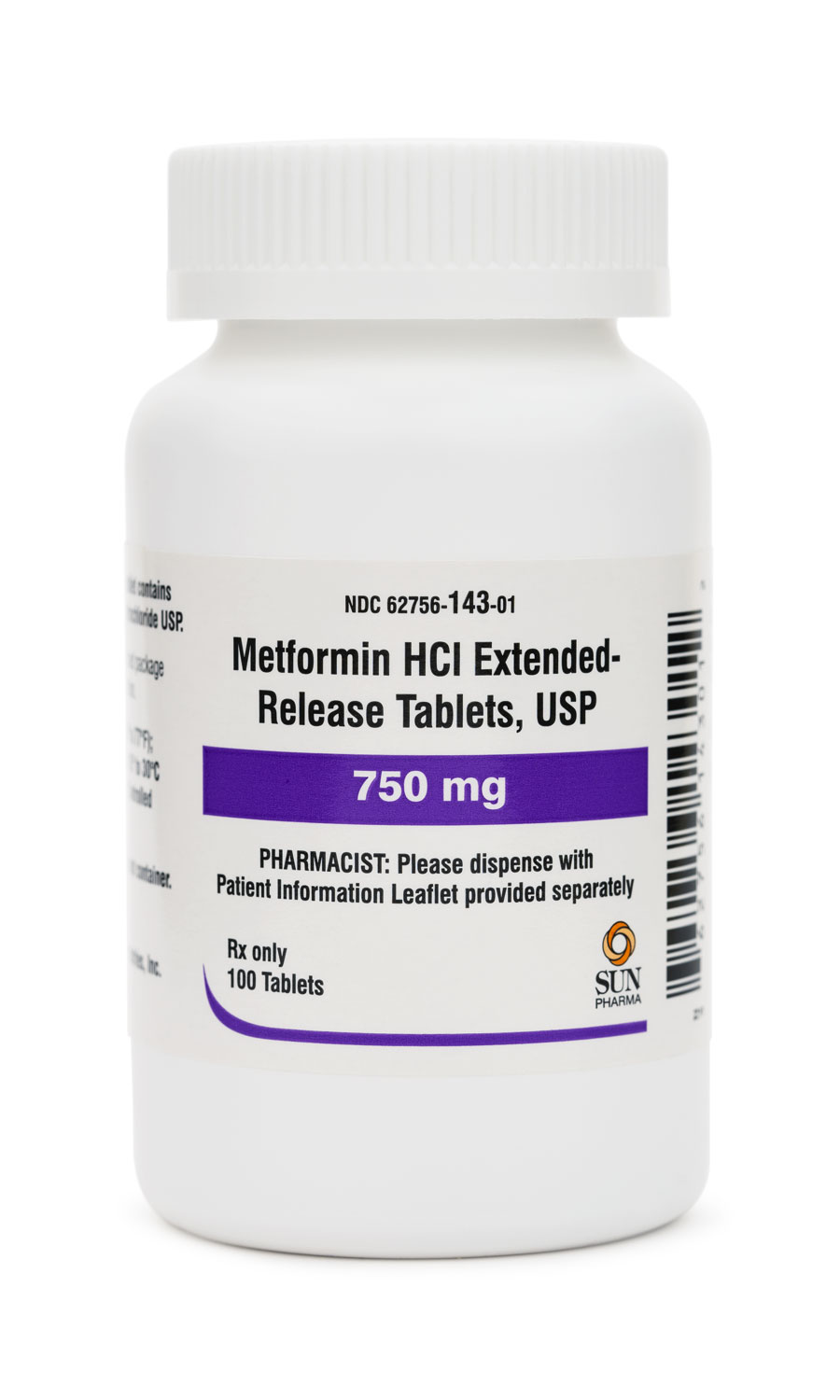
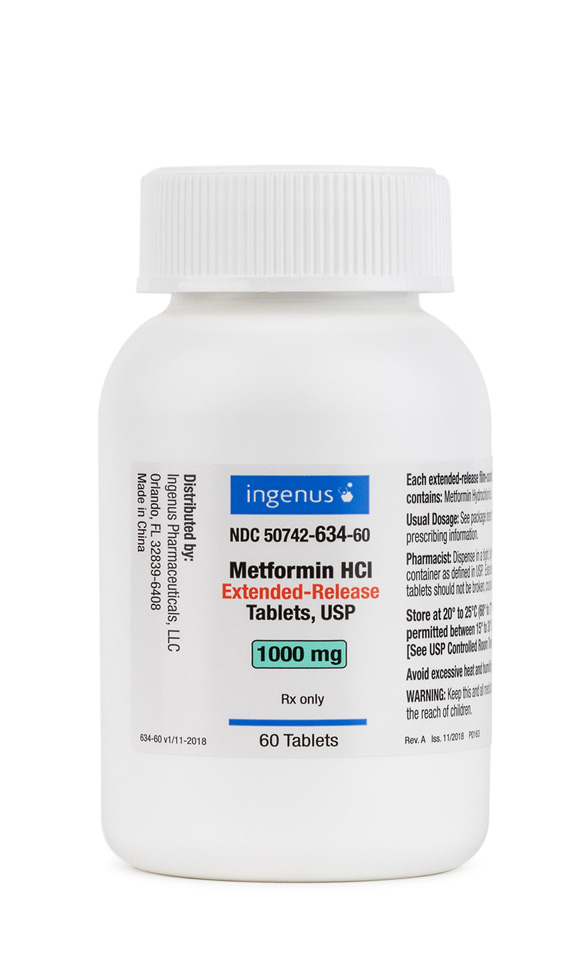
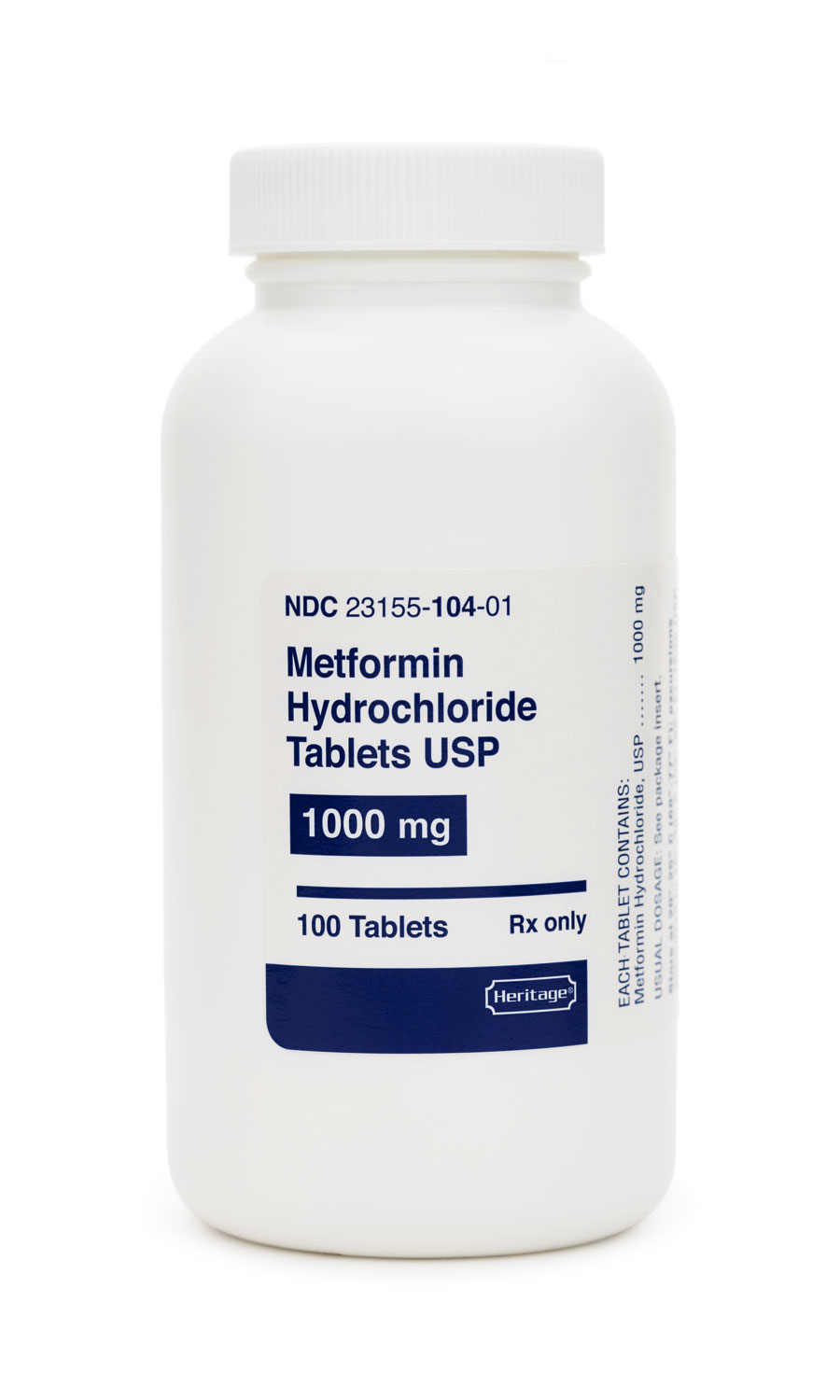
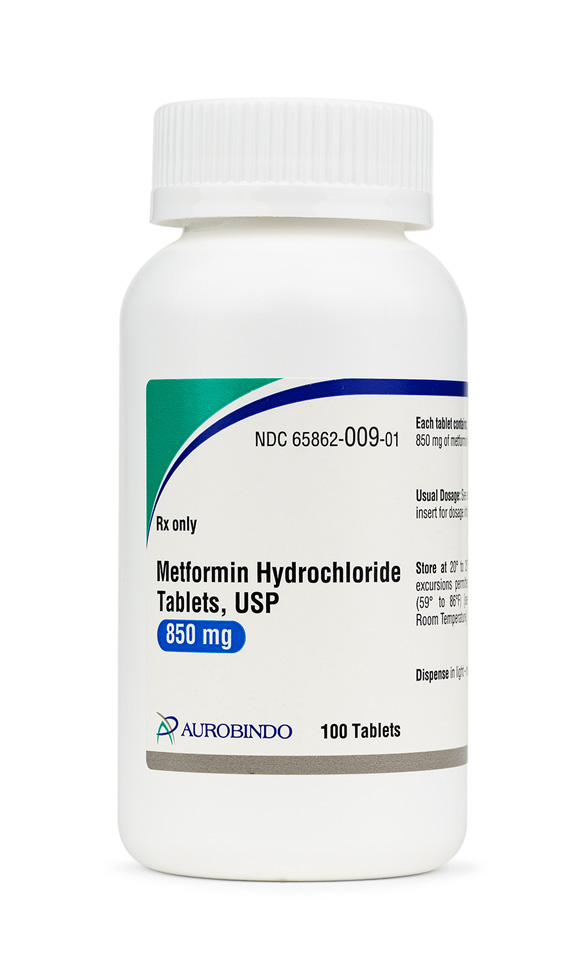
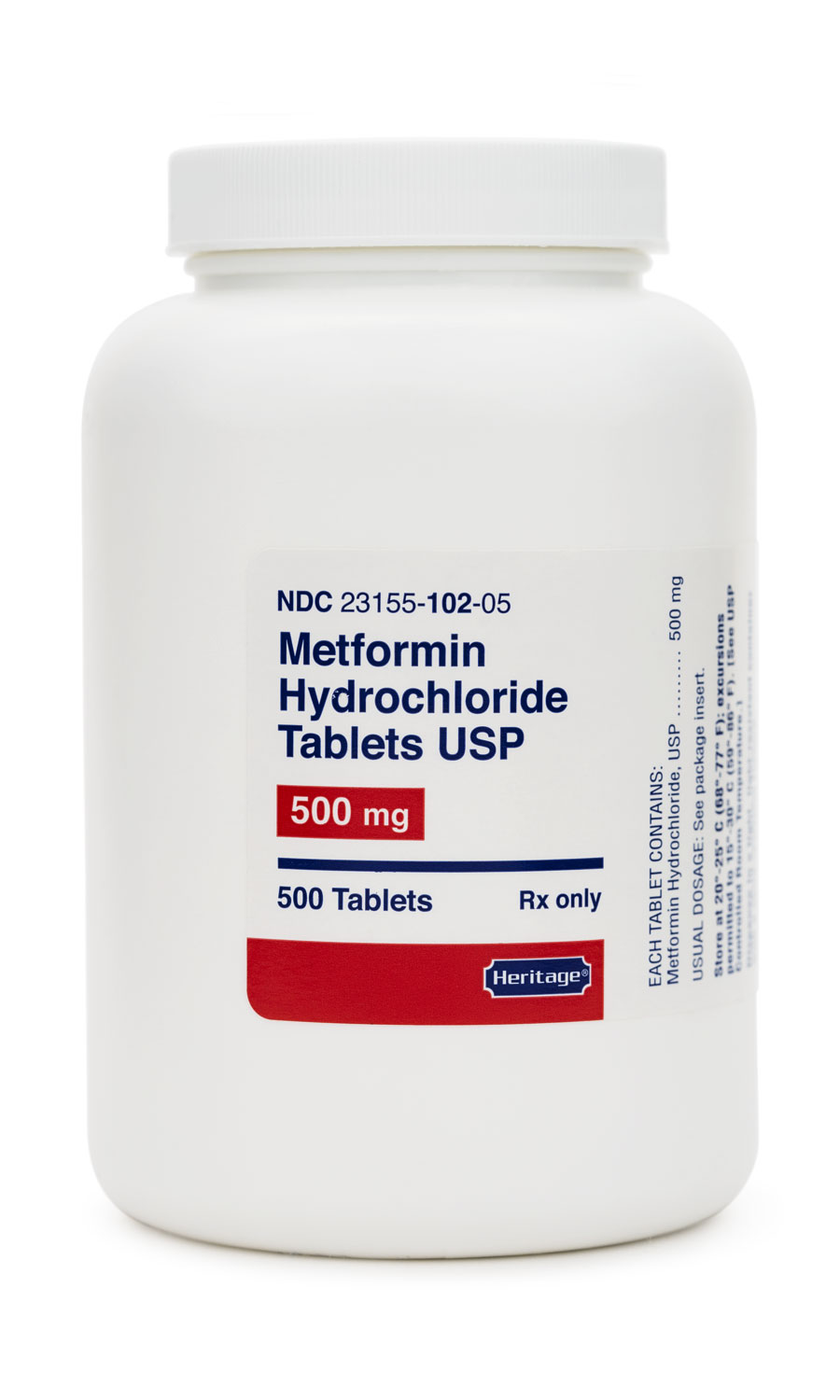
 Tirzepatide ODT
Tirzepatide ODT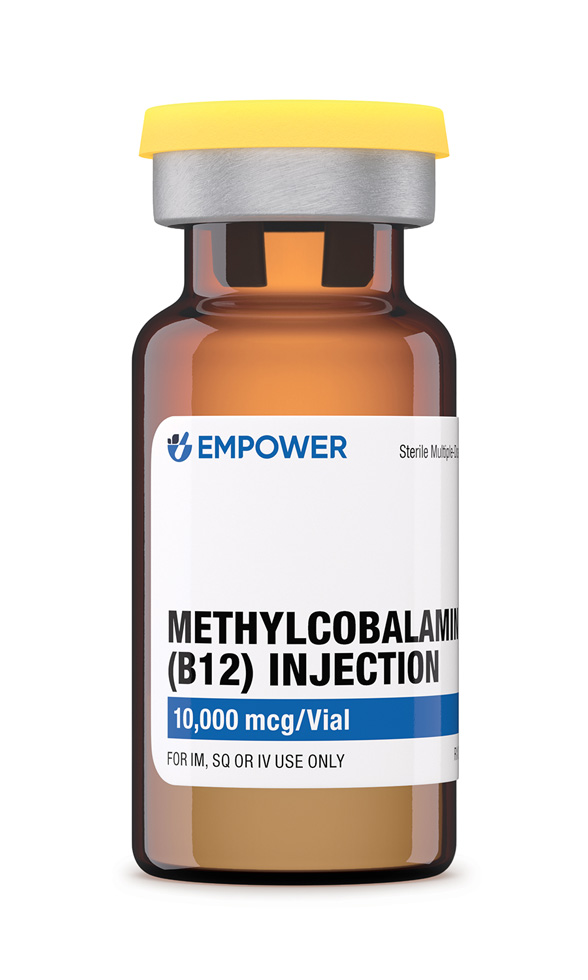 Methylcobalamin Injection (Vitamin B12)
Methylcobalamin Injection (Vitamin B12)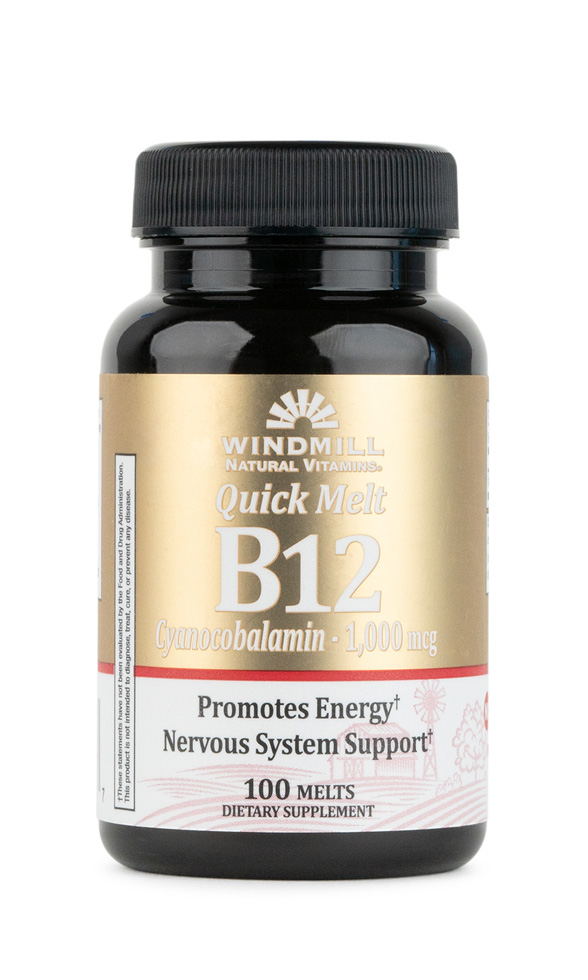 Cyanocobalamin Tablets
Cyanocobalamin Tablets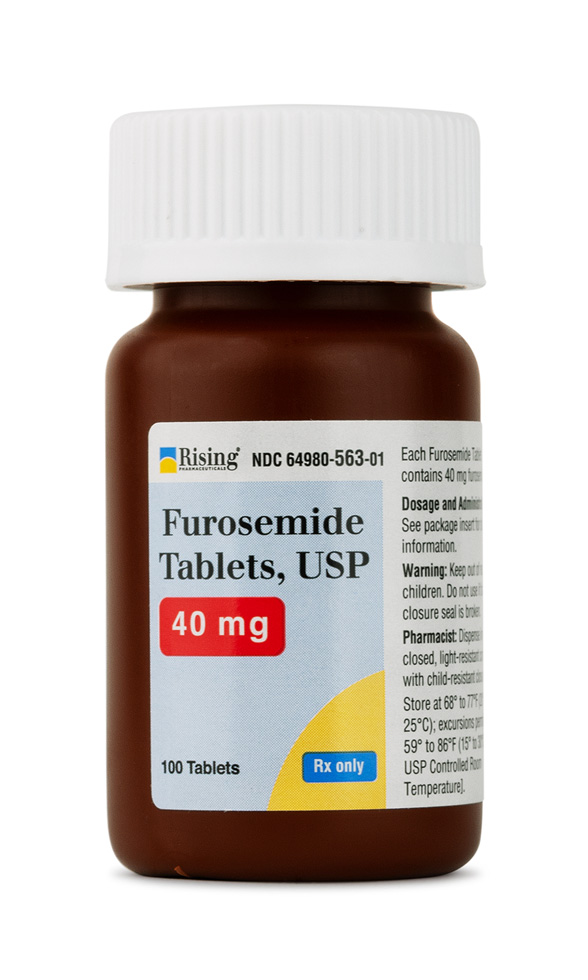 Furosemide Tablets
Furosemide Tablets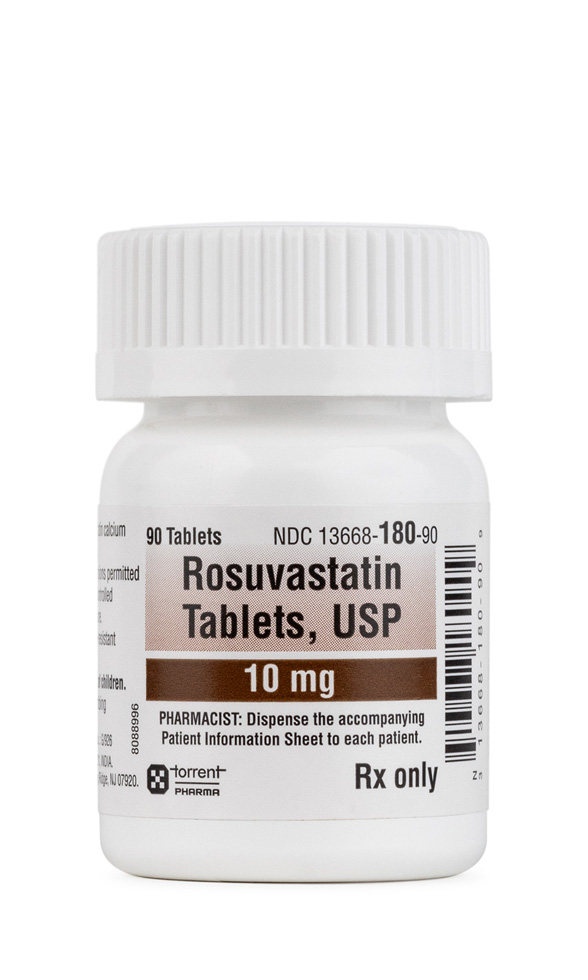 Rosuvastatin Calcium Tablets
Rosuvastatin Calcium Tablets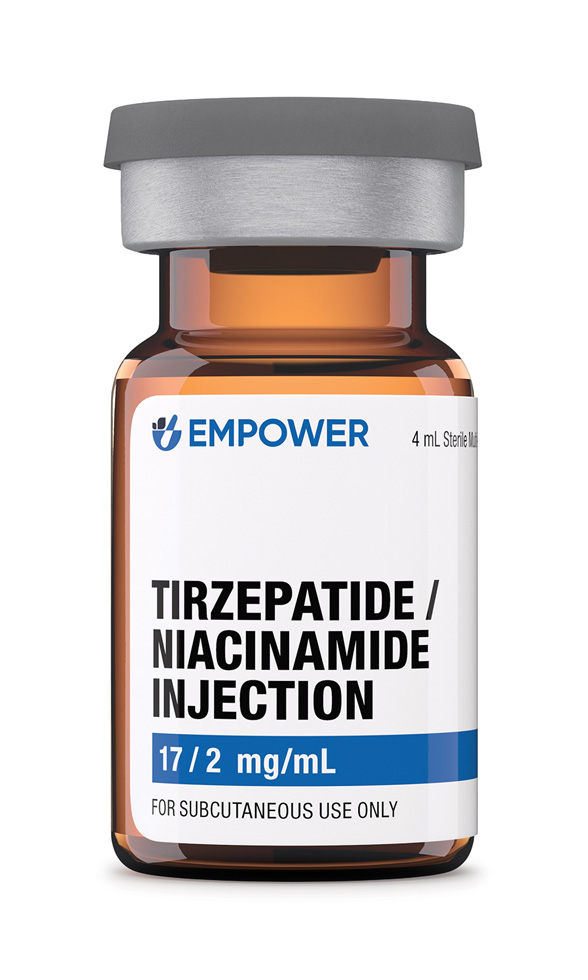 Tirzepatide / Niacinamide Injection
Tirzepatide / Niacinamide Injection Sermorelin Acetate ODT
Sermorelin Acetate ODT Semaglutide / Methylcobalamin ODT
Semaglutide / Methylcobalamin ODT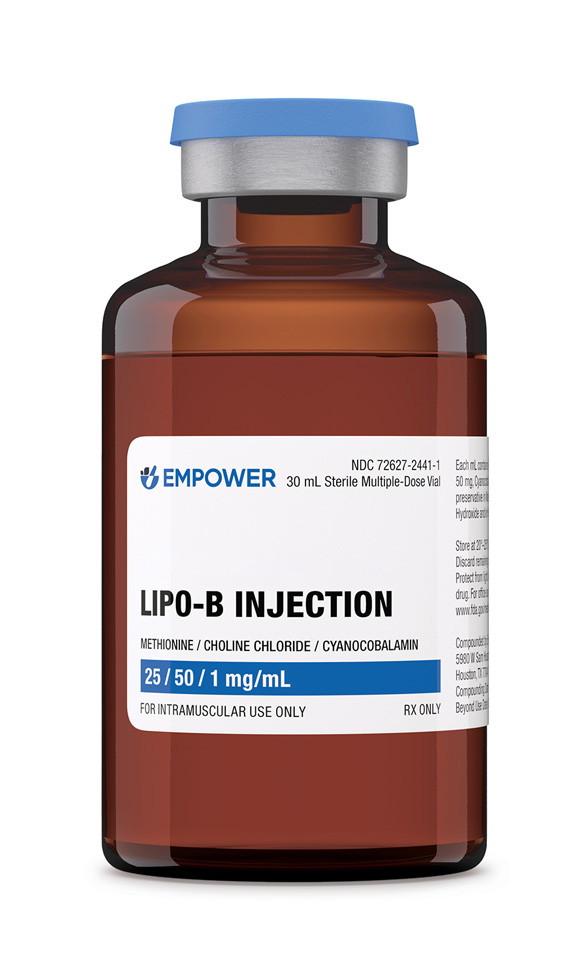 Lipo-B Injection
Lipo-B Injection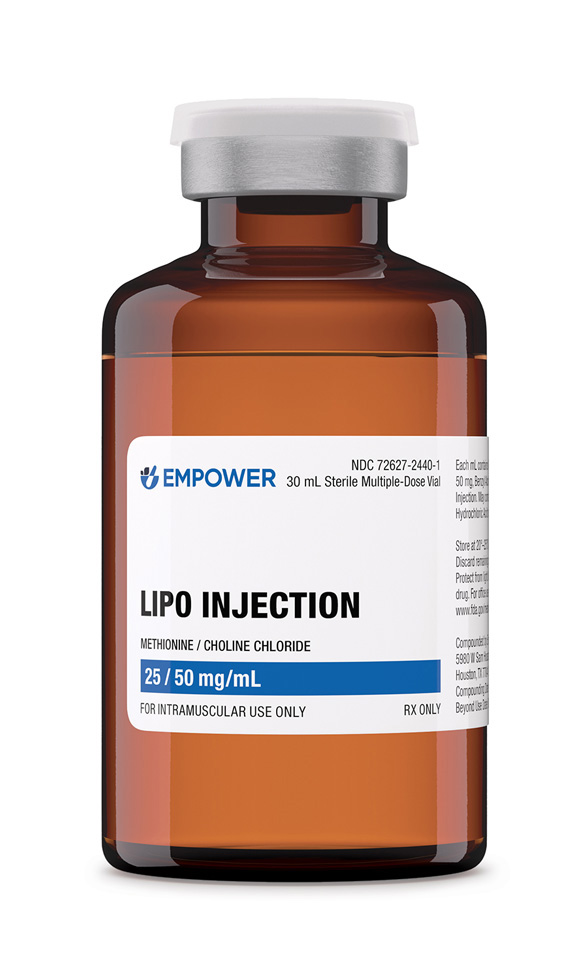 Lipo Injection
Lipo Injection